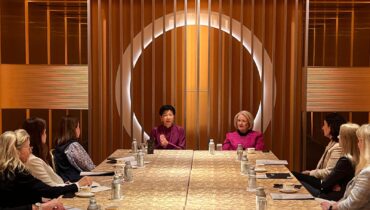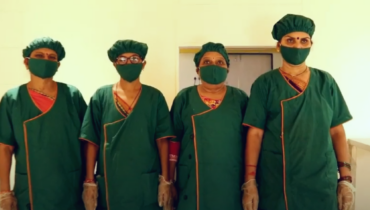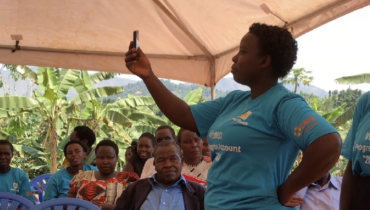Access to a bank account is a key indicator of poverty reduction, and plays a vital role in increasing education and helping the poorest communities manage risk and absorb financial shock. The World Bank Group recently released its report on financial inclusion, which states that between 2011 and 2014, 700 million adults became account holders at financial institutions, a 20 percent drop in the number of unbanked. Despite this encouraging news, there is still a huge gender gap in access to financial institutions, which did not significantly change between 2011 and 2014. There are still 1.1 billion unbanked women across the world.
According to the report, in 2011, 47 percent of women and 54 percent of men had an account; in 2014, those numbers increased to 58 percent of women and 65 percent of men with an account – still a seven percentage point gap. In South Asia, the region with the most number of peopleliving in extreme poverty, the gender gap is 18 percentage points.
Women make up 70% of the world’s poor, and increased access to financial institutions is an important stepping stone to bringing them out of poverty. According to World Bank Managing Director Sri Mulyani Indrawati, by giving a woman a safe place to save money, it gives her greater control in her household’s financial decision making, and allows her to more actively participate in the economy. It also gives her a safe place to put aside funds for emergency situations, education and even a small business. And we know that when a woman is economically empowered, her family and her community thrive.
Women face significant challenges in trying to open their own bank accounts. In many countries, women must have the permission from their husband or other male family member to open an account. Additionally, women’s lack of financial literacy often prevents them from either opening a bank account or understanding how to manage their finances. Oftentimes, women’s accounts are in name only, with their husbands actually controlling the finances.
Technology is an essential solution to addressing the gender gap in access to financial institutions. Utilizing mobile technology, women can set up secure accounts that are both convenient and confidential, and can revolutionize the ways in which they do business. This is an area where the private sector industry operators can lead the charge. For example, in Kenya, M-PESA, a mobile banking application developed by Vodaphone and Safaricom, has completely changed the way women sell their goods. Selling fish used to be a cash industry that took a lot of time and money. Now, with M-PESA, women are able to send their fish to market by bus and receive their money remotely.
In Nigeria, only 30 percent of the adult population – 84.7 million – are banked, but there are an astounding 159 million cell phone subscriptions. To take advantage of this potential for mobile banking, the Cherie Blair Foundation for Women, in partnership with Visa, First Bank of Nigeria, and Youth Technology Foundation, is enabling 2,500 female entrepreneurs to become retail agents for the First Bank of Nigeria. These women will then provide mobile financial services to women in underserved and rural areas.
However, technology is not without its own limitations, and it is not surprising that where there is a substantial gender gap in access to technology, there is also a gap in access to financial institutions. For example, in Bangladesh, where four out of five people have never had access to traditional banking institutions, bKash has been very successful in reaching the rural poor to set up mobile banking accounts. However, only 44% of women own mobile phones as compared to 72% of Bangladeshi men; only 13% of women have used mobile banking services, as compared to 33% of men.
In addition to technology, we also need more gender disaggregated data to better understand how to make sure women have greater access to mobile phones and bank accounts, better communication with business leaders in both the telecommunications sector and at financial institutions on the business case for including women, and more female leadership in the telecommunications and finance industries.
Closing the gender gap in access to mobile represents a US$170 billion business opportunity for the telecommunications industry, and will be an essential step in closing the gender gap in access to financial institutions. To solve this critical issue, industry actors from the mobile sector and the banks, governments, and other key players must continue to find new and innovative ways to work together to provide holistic approaches and solutions.


